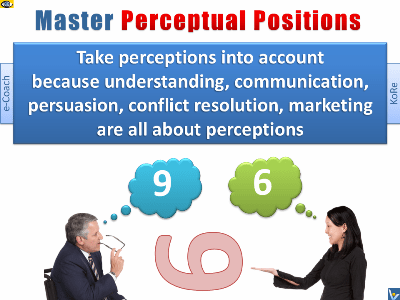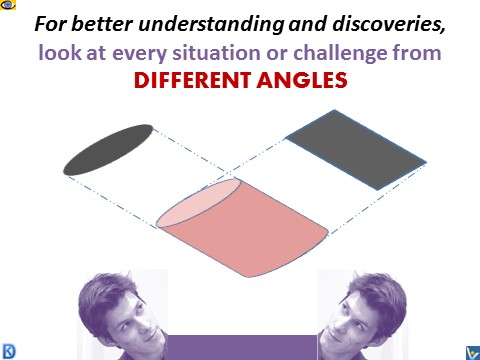| |
|
The reality is the same, but
each person
perceives it
differently.
|
|
|
 |
|
Take Perceptual
Differences Into Account
Perceptual differences occur when individuals are exposed to the
same stimuli and perceive them in different ways. Be aware of the
lenses of our perceptions that make us see things as we are not as
they are. |
|
| |
To
be able to recognize,
appreciate, adapt to, manage,
and benefit from perceptual
differences, develop perceptual
awareness and empathy.
Be
willing to take different
perceptual positions to get
a deeper insight into driving
forces, differences and
synergy opportunities.
|
|
 |
 |
|
All too often the way you frame a problem contains an assumption
that prevents you from solving it.
Reframing the issue is often the first step toward a great solution.
|
|
| |
|
Focus on the desired outcome and
learn flexibility from water Ė
donít try to break concrete
walls, flow around obstacles
towards your destination.
|
|
|
 |
If
you want your message to hit the
target,
make an adjustment to the wind.
~
Vadim
Kotelnikov |
|
In communication, "making an
adjustment to the wind" means
taking into account perceptions
and
expectations of the other
party and adapting a message
accordingly to ensure that it
produces the intended impact.
|
|
| |
Paint a
bigger picture that will help the both parties
fly well above the minor barriers that block your
progress now.
Focus on similarities and harness
differences to achieve a common goal. |
|
 |
|
|